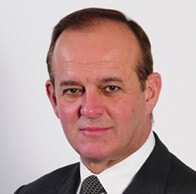Bodyguard
Within the security industry, we have seen a decline of the term bodyguard over the past 5 years. Bodyguard has come to symbolize the buffoon who we see aggressively pushing crowds in images with celebrities in gossip magazines. This caricature could include the off-duty cop who can carry a concealed weapon, the bouncer who is very large, or the martial artist who can fight well.
These bodyguards have been involved in selling information to the tabloids, violating confidentiality agreements, various use of force incidents, having improper or no licensing, hiring independent contractors and misclassifying security employees, carrying guns or weapons without the proper permits or license, starting frivolous labor board suits and workman’s compensation suits against their client, impersonating police officers, and even engaging in inappropriate behavior with the client.
Bodyguards will typically become a major liability to the client for reasons of indiscretion, unwarranted use of force or incompetency in the area of risk management.
The Past: Bodyguards are Dinosaurs
In the past, these untrained bodyguards dominated the market.
Today, most individuals and companies that hire executive protection services are more evolved. Reducing liability has become the number one concern for them and they look for professional executive protection agents with formal training from a respected and accredited executive protection school. The reason that this is important is that executive protection training is a completely different academy from police or military academies; at an executive protection school the focus is on protective intelligence and prevention. A seasoned executive protection agent has accumulated 600-1000 hours of formal executive protection training over the course of his or her career.
Today, the untrained element still remains alongside the professional agents within the security industry.
So what has changed?
Laws
California, as well as other states that have a licensing security board like the Bureau of Security and Investigations (BSIS), has cracked down on unlicensed activity.
Security Training
Anyone working in Security in the state of California must hold a ‘guard card’. In order to obtain a ‘guard card’, the security officer must have completed at least 40 hours of training from BSIS. In addition, professional Executive Protection training schools have now been operating in the US for the last 20-25 years and have elevated the formal training base in the industry.
Leaders in the security industry realize that providing Executive Protection services takes a specialized skill set and that past experience or training in law enforcement, the military, and martial arts is not enough. Those academies are a great base, but do no train anyone in Executive Protection. Cross training is necessary to make the transition and is difficult but it can be done. An example is the off-duty police officer: a police officer receives thousands of hours of training about pulling his or her gun at the scene of a crime. It’s a reactive motion. In Executive Protection we need to train against that. An Executive Protection Agent should never be reacting to a crime by drawing his or her weapon. Rather, the Agent is focusing on the Principal and covering and evacuating him or her out of harm’s way. As an aside, another strong argument to not using off-duty policeman as Executive Protection Agents is that police are bound by their oath to stop crime and drop all off duty activities at a moment’s notice to report for duty.
A good Executive Protection Agent will continue to train on a yearly basis to maintain the standards and skills required, just as good companies will offer training to their Agents. The US Secret Service-style training provides the foundation for a strong Executive Protection training program. The themes will generally focus around:
- Advance Work: protective intelligence/threat assessment
- 3 rings of Protection: layering the protection around the principle
- Cover and Evacuate: we never stand and fight
A good executive protection training school or company has the following curriculum outline as part of their training:
Protective Advances – Protective Intelligence – Radio Communications – Motorcades and Routes – Firearms and Special Tactics – Public Affairs and Media Control – Emergency First Aid/CPR/AED – Counter Terrorist Driving – Explosive Device Detection – Surveillance Recognition – Ambush Recognition – Post Assignments – Cover and Evacuate – Counter Surveillance – Protective Formations – Command Post Operations – Access Control and Crowd Control – Bomb Incident Management – Safeguarding Privacy – Threat Management – Evasive Driving – Investigations – Kidnap/Assassination Studies
Final Recommendations For People or Corporations That Use Executive Protection
- Hire contract security vs. in-house, there is less liability exposure and management issues.
- Make sure that each executive protection agent has gone through an extensive background check including an interview, criminal & civil files, drug test, psychological test, past employers, and personal references.
- Make sure the security company and all executive protection agents have the proper licensing and security permits. In California the company must have a private patrol operator’s (PPO) license. Each executive protection agent must have a BSIS security guard card, exposed firearms permit, baton permit and pepper spray; California concealed weapons permit; and CPR (adult, child, & infant), first aid, & automated external defibrillator certified by the Red Cross or American Heart Association. Any client can verify licenses on the California Bureau of Security and Investigations Services website.
- All executive protection agents must have formal executive protection training and proof should be given to you in the form of diplomas, which you can verify.
- The security company should have an executive protection training program and continuous yearly training. You should request a copy of the training curriculum
- The security company should have at least $2 million (WPG has $10M) in armed liability insurance and $1 million in workman’s compensation insurance, listing you as an additional insured on the policy. This insurance must be able to cover the Agents wherever they travel both domestically and internationally.
- No security company should have any independent contractors working on the protection team. All executive protection agents must, by law, be employees of the company for liability purposes.








